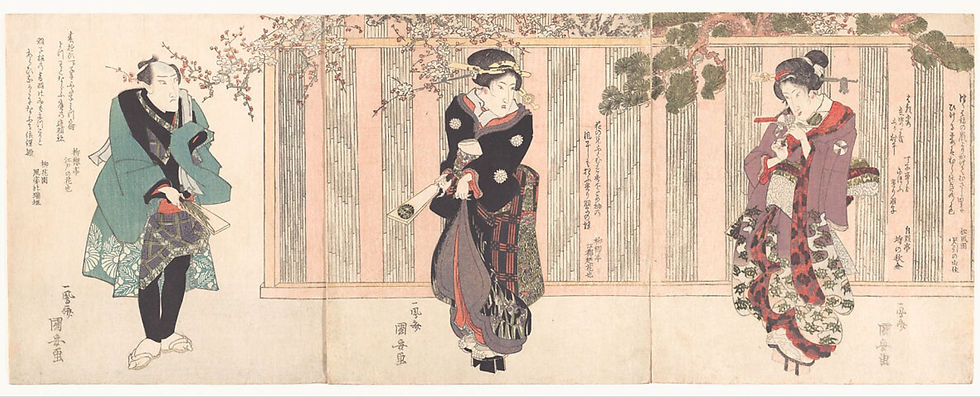Celebrating Japanese New Year Traditions
- JapaneseFriendshipGarden

- Dec 19, 2023
- 2 min read

Every year at the Japanese Friendship Garden of Phoenix, we take time to celebrate New Year's the Japanese way. Japanese New Year, known as Shogatsu 正月 or Oshogatsu お正月, is one of the most significant and traditional celebrations in Japan. Festivities occur December 31, and typically extend until January 3rd. Like other New Year celebrations around the world, many of the Japanese traditions center around the ideas of a 'fresh start' and 'new beginnings.'

Décor:
Every year, our Garden Curator builds kadomatsu 門松 to display outside our gate. Kadomatsu is a traditional Japanese New Year decoration featuring bamboo, pine, and plum branches symbolizing longevity, prosperity, and steadfastness. They are placed at the entrances of doors or buildings to invite good fortune into the space.

Activities:
Mochitsuki 餅つき, or mochi-pounding, is also a common new year activity. This centuries-old traditions serves as a symbolic and communal activity that brings families and communities together, fostering a sense of unity, prosperity, and shared joy. Eating mochi during New Year is also symbolic of longevity, due to the stretchiness of fresh mochi!
This past weekend, guests got to witness mochitsuki, and enjoy fresh mochi with us at the Garden.

The leftovers were also used for an activity called 'mochibana,' a practice of making ikebana with mochi. This practice is common in the colder climates of Japan where flowers aren't seen in the winter. Colored mochi is instead placed on branches to look like the buds of flowers.
New Year in Japan:
Outside of the activities that we can do at the Garden, there are more traditions including:

New Year's Eve (Omisoka 大晦日): During New Year's eve, families gather for a special dinner, and enjoy various foods like toshikoshi soba 年越し蕎麦, symbolizing longevity. Many visit shrines or temples for Joya no Kane 除夜の鐘, ringing temple bells 108 times, which is believed to symbolize the purification of the 108 human sins in Buddhism.

New Year's Day (Shogatsu 正月): Hatsumode 初詣, the first shrine or temple visit, involves prayers for health and success. Traditional osechi-ryori 御節料理 food is prepared, and amulets are purchased for good luck at the local shrine.

First Sunrise (Hatsuhinode 初日の出): Observing the first sunrise is considered auspicious, as it celebrates a new start to the year.

Otoshidama お年玉: Adults give monetary gifts (otoshidama) to children for luck and prosperity, wrapped in colorful envelopes. It's not uncommon for large sums of money to be gifted to celebrate the child's future.

Games and Activities: Families participate in traditional games such as hanetsuki 羽根突き - a paddle game, with wooden paddles that are ornately decorated. Thisgame, similar to the Western concept of badminton has been played for hundreds of years!
In the serene embrace of the Japanese Friendship Garden of Phoenix, our annual celebration of the Japanese New Year reflects not only a cultural tapestry but also a shared journey into the essence of renewal and fresh beginnings. From the bamboo, pine, and plum branches of the kadomatsu, inviting prosperity into our space, to the rhythmic echoes of mochi-pounding during mochitsuki, symbolizing unity and shared joy, our Garden becomes a living testament to the rich traditions that define Shogatsu or Oshogatsu. We wish you a happy New Year!
.png)


Comments